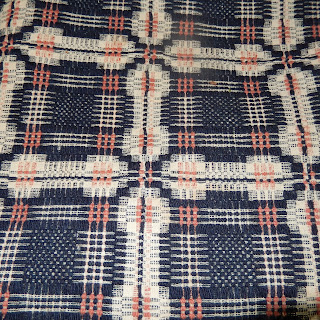Coverlet is a term for a bedspread that dates from the 13th century. Counterpane (mispronounced as "counterpin" in some areas, like the Appalachians) means the same thing and comes from the 15th century. Both were used in rural areas to refer to a woven or lightweight bedspread, other than a quilt.
Even in families that didn't have many resources, a woman usually placed her best bed covering on the top of the bed. For one thing, the bed was often in a visible location, especially in one-room cabins. Displaying the best bed covering was especially true for those who spun and wove, which applied to many in early America. Then, weaving wasn't considered a craft or art, but it was a necessity.
Women would collect and share weaving patterns with their neighbors. Plaids were popular, especially in areas settled by the Scots and Irish. However, solid patterns were also common. Expert weavers would produce even more complicated designs. Today some of these remarkable coverlets have been saved and handed down through generations for us to enjoy.
In Sown in Dark Soil, my second historical novel in the Appalachian Roots series, Leah asks Granny Em to teach her to weave some patterns. She had learned to weave on the plantation, but they'd just woven solid cloth to make clothes for the slaves. Ivy, her sister, turns her nose up at homespun material. Today, most of us think it's special.
__________________________________________





No comments:
Post a Comment